Fake Meat vs Real Meat
![]()
- https://www.facebook.com/plugins/like.php?app_id=&channel=https%3A%2F%2Fstaticxx.facebook.com%2Fx%2Fconnect%2Fxd_arbiter%2F%3Fversion%3D46%23cb%3Df11efb7bd9ad45c%26domain%3Dthenutritionwatchdog.com%26is_canvas%3Dfalse%26origin%3Dhttps%253A%252F%252Fthenutritionwatchdog.com%252Ff573f3497d917%26relation%3Dparent.parent&container_width=106&href=https%3A%2F%2Fthenutritionwatchdog.com%2Ffake-meat-vs-real-meat%2F&layout=button_count&locale=en_US&sdk=joey&send=false&show_faces=false&width=90
- https://platform.twitter.com/widgets/tweet_button.3da3731af9a8a2b242ed5500485bb22f.en.html#dnt=false&id=twitter-widget-0&lang=en&original_referer=https%3A%2F%2Fthenutritionwatchdog.com%2Ffake-meat-vs-real-meat%2F&size=m&text=Fake%20Meat%20vs%20Real%20Meat&time=1674253485612&type=share&url=https%3A%2F%2Fthenutritionwatchdog.com%2Ffake-meat-vs-real-meat%2F
- 49Save

By: Cat Ebeling, BSN,co-author of the best-sellers: The Fat Burning Kitchen,The Top 101 Foods that Fight Aging&The Diabetes Fix
Fake meat sales are soaring, thanks to a couple of new product offerings out there that look and supposedly taste like real meat. Are they better for the planet? Are they better for our health?
Once upon a time there was only Tofurky and Gardenburgers to eat instead of meat. Now ‘fake meat’ is the new trendy food at restaurants that even include TGI Fridays and White Castle.
Fake meat sales have grown because of the growing interest in lessening the environmental impact of climate change, due in part, say the ardent vegans, by the concentrated animal factory operations (CAFO’s) that plague the countryside of the United States and other industrialized countries.
With big celebrities like Leonard di Caprio promoting companies that make fake meat like Beyond Meat and Impossible Burger, droves of people are now purchasing these meat alternatives in hopes of improving both their own health and the planet’s health. And, besides plant-derived meat alternatives, veggie burgers are now facing competition from the real thing—sort of—lab-grown meat. Yes, ‘real’ meat that does not come from an animal. Grown in a lab instead.
But really, are these ‘meats’ good for you—or the planet?
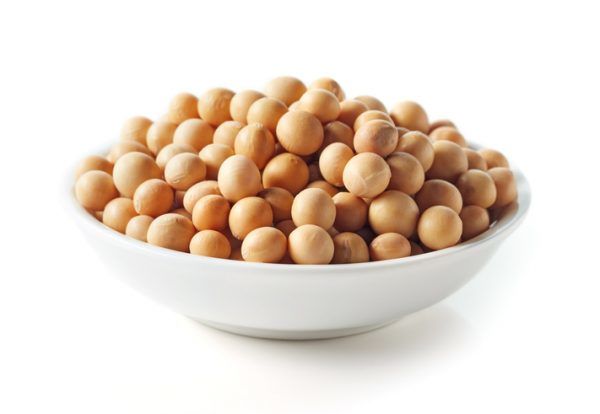
Remember tofu? Every vegan’s favorite meat-substitute. While generally tasteless on its own, tofu absorbed flavors and seasoning to adapt to most any recipe. (Soy products have been shown to not be healthy for you).
Attempts to make meat substitutes have been around forever, but growing increase in demand has increased the products that are now available. Fast forward to today, when plant-based meat is far more sophisticated—looking more and tasting more like the real thing.
Companies like Beyond Meat and Impossible Burger have utilized new research to make their products even more meat-like. Other meatless ‘meat’ companies include Gardein, Tofurky (yes, it’s still around), Fieldroast, Lightlife, Morningstar, Trader Joe’s, and Target’s own brand, Simply Balanced.
Beyond Meat worked with scientists at the University of Missouri to develop pea proteins and other plant-based proteins, along with things like beet juice to create that ‘bloody’ look like a real juicy burger.
Impossible Foods was actually founded by a biologist who has attempted to copy the juice that a real burger contains. Impossible Foods does this by using a type of plant-based ‘blood’ from soy, which has drawn some criticism. More on that later.
Aside from these plant-based meats that are emerging, a new technology has been brewing in a lab. Lab-grown meats are a complex scientific technology to re-create real meat, in a lab. Lab meat is actually grown from cell tissues harvested from real meat. However, growing a group of cells in a laboratory is far different that raising an animal with meat, so the lab meat products are still a work in progress.
One clean meat startup created a single cultured meatball at a cost of around $18,000 a pound. It’s unlikely it will make it to your grocery store shelves for a while yet, although the cost of production is rapidly decreasing as more and more “clean meat” companies appear. A couple companies in the race now predict they may have ‘real’ affordable lab meat by 2020.
So what exactly are we eating when we eat these meat substitutes?
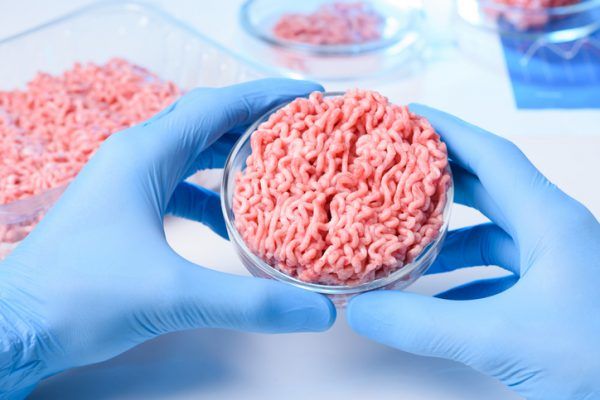
When I eat grass-fed/grass-finished burger raised on an organic farm, I know exactly what I am getting. But eating plant-based manufactured ‘meat’ is a whole different story, and these foods don’t seem exactly like health foods either.
While I cannot list every single ingredient in all the plant-based substitute meats, the (new improved) ingredients of one of the most popular meat-substitutes include: water, soy protein concentrate, coconut oil, sunflower oil, natural flavors, potato protein, methylcellulose, yeast extract, cultured dextrose, food starch modified, soy leghemoglobin, salt, soy protein isolate, vitamins and minerals. How ‘natural’ is that?
Soy has been controversial for our health for a number of years. Why? Well for one, if it is not organic, it has been doused with glyphosate just days before harvest, and no doubt you are getting a load of that toxic substance as soon as you bite into that meatless burger.
Soy also contains goitrogens which block thyroid function, phytates which prevent mineral absorption, and phytoestrogens which can cause natural estrogen to go awry in the body.
Now let’s address the other controversial ingredient in fake meat—leghemoglobulin, which also comes from soy. This is the stuff they put in the Impossible Burger to look and taste like blood.
The key ingredient, designed to look like real blood, actually does not meet the basic FDA, Generally Recognized As Safe (GRAS) status. This soy ‘heme’ is a bio-engineered protein additive that adds the meat-like taste and color. This GMO product is something that we as humans have never eaten before. Impossible Foods recognizes that SLH has never been widespread in the human diet in a natural or genetically engineered form.
According to this article in Huffpost (Aug, 2017) and several other news articles, Impossible Foods admitted that up to a quarter of the ‘heme’ ingredient in the burgers was also composed of 46 “unexpected” animal proteins, some of which have been identified and none that have been assessed for safety as of yet.
Impossible Foods put this genetically engineered product on the market even though the company has admitted to the FDA that it had not conducted safety tests. Despite the FDA’s warnings, Impossible Foods went ahead and started selling the Impossible Burger in 2016.
Uhh, please pass the REAL grass-fed beef burger…
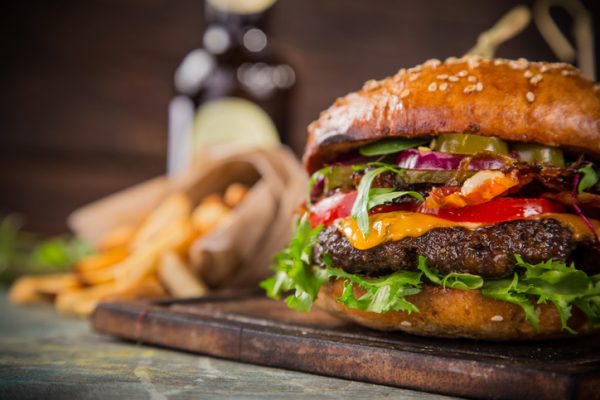
What about some of the other meat substitutes? While they may not have the controversial GMO soy ingredient in them, most of them are highly processed foods, with lots of filler ingredients like wheat protein (gluten), starches and fillers, pea protein, isolated soy protein, natural and artificial flavors (no one knows WHAT these are), salt, sugars, and MSG. Honestly, those are not healthy ingredients, they are processed food ingredients, and many of those have their own health risks.
While Beyond Meat and Impossible Foods meats have similar amounts of protein, they are full of other UN-natural ingredients. I honestly don’t understand the thought process of wanting to eat a processed fake meat instead of real meat from a grass-fed cow or pasture-raised chicken.
Granted, I understand some of the reasoning to avoid the conventionally-raised, drug-filled, cruelly treated, polluting, CAFO meat from cattle or poultry. And to some extent, eating fake meat gets around some of the methane, CO2 emissions, and toxic runoff issues that surround CAFO meat.
However, synthetic biology has its own issues. What about this new lab-grown meat, otherwise known as “clean meat”. This is ‘Frankenburger’ for sure!
Lab-grown meat comes from stem cells from an animal’s muscle tissue, combined with a serum (usually from the fetuses of dead cows). After the cells are fed sugar and salts, they begin to grow into actual muscle fibers. Sometimes fat tissue is added to the meat to make it seem more ‘real’.
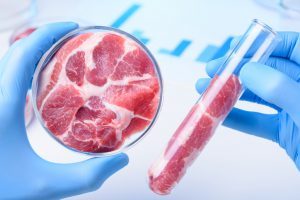
Yes, this so-called ‘clean meat’ is possibly better for the environment and uses less land and water, and the lab-grown meat producers say it will help to provide a solution to the need for meat for a growing population. Little is known about lab-grown meat at this point however; it thus far is extremely expensive to produce.
And what about nutrition? Certainly, meat grown in a petri dish cannot offer the natural health benefits that grass-fed meat does.
While large-scale industrial meat production takes its toll on our health, and the health of the earth, sustainable alternative do exist. Cattle that graze on land that is unusable for crops actually improve the soil quality of the earth by fertilizing it as they graze.
Compare that to all the industrial processing and packaging that goes into a fake meat like Impossible Burger. Mono-cropped grains, pesticides and fertilizers that destroy the natural, living soil, and fossil fuels that are used for large-scale farming and processing, along with factories to produce it, trucks and trains to transport it, and packaging of cardboard, ink and plastic.
If you can get away from CAFO meats, you will find that grass-fed, pastured-raised meats and poultry offer you far more NATURAL nutrition in a one-ingredient product. Naturally-raised meats contain far more healthy omega 3 fats, cancer-fighting conjugated linoleic acid (CLA), real bioavailable heme iron, vitamin A, and health-promoting antioxidants than grain-fed, unhealthy CAFO meat and poultry.
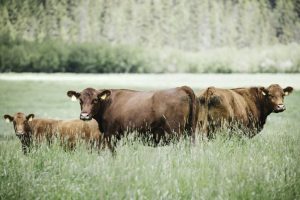
While some think the primary goal of avoiding meat is to stop the suffering of animals, compare a diet of grass-fed meat, dairy and pasture-raised chickens that eat a natural diet based on naturally-growing grass from un-tilled, naturally fertilized soil, that allows other animals to thrive as well.
Animals like gophers, snakes, toads, mice, rabbits, birds, insects, worms, grubs, and fish still live on this land that is alive. Cattle and chickens graze on the grass, leaving behind manure that goes back into the soil and nourishes it.
Compare this to mono-cropped fields, cleared of all natural plants, grasses, weeds, trees and animals, covered in artificial fertilizers, herbicides with genetically modified grains and watered with irrigated soil from a depleted river. Is this natural? Is this humane?
There is much that goes into this equation, and livestock get much of the blame, as do meat-eaters. Eating high-tech, manufactured, processed fake meat will not save us, our health, or the planet.
Here is a great quote from Dana Perls in an article published the The Medium, criticizing food tech:
“Instead of investing in risky new food technologies that are potential problems masquerading as solutions, shouldn’t we be investing in proven, beneficial, regenerative agriculture and transparent, organic food that consumers are actually demanding?”
A big part of the issue here is that we, as a whole, seem to have a total disconnect from nature. We humans are part of nature, and learning to eat NATURALLY, in a more sustainable way, is the answer. Not technologically-created food.
ake Meat vs Real Meat
- https://www.facebook.com/plugins/like.php?app_id=&channel=https%3A%2F%2Fstaticxx.facebook.com%2Fx%2Fconnect%2Fxd_arbiter%2F%3Fversion%3D46%23cb%3Df11efb7bd9ad45c%26domain%3Dthenutritionwatchdog.com%26is_canvas%3Dfalse%26origin%3Dhttps%253A%252F%252Fthenutritionwatchdog.com%252Ff573f3497d917%26relation%3Dparent.parent&container_width=106&href=https%3A%2F%2Fthenutritionwatchdog.com%2Ffake-meat-vs-real-meat%2F&layout=button_count&locale=en_US&sdk=joey&send=false&show_faces=false&width=90
- https://platform.twitter.com/widgets/tweet_button.3da3731af9a8a2b242ed5500485bb22f.en.html#dnt=false&id=twitter-widget-0&lang=en&original_referer=https%3A%2F%2Fthenutritionwatchdog.com%2Ffake-meat-vs-real-meat%2F&size=m&text=Fake%20Meat%20vs%20Real%20Meat&time=1674253485612&type=share&url=https%3A%2F%2Fthenutritionwatchdog.com%2Ffake-meat-vs-real-meat%2F
- 49Save

By: Cat Ebeling, BSN,co-author of the best-sellers: The Fat Burning Kitchen,The Top 101 Foods that Fight Aging&The Diabetes Fix
Fake meat sales are soaring, thanks to a couple of new product offerings out there that look and supposedly taste like real meat. Are they better for the planet? Are they better for our health?
Once upon a time there was only Tofurky and Gardenburgers to eat instead of meat. Now ‘fake meat’ is the new trendy food at restaurants that even include TGI Fridays and White Castle.
Fake meat sales have grown because of the growing interest in lessening the environmental impact of climate change, due in part, say the ardent vegans, by the concentrated animal factory operations (CAFO’s) that plague the countryside of the United States and other industrialized countries.
With big celebrities like Leonard di Caprio promoting companies that make fake meat like Beyond Meat and Impossible Burger, droves of people are now purchasing these meat alternatives in hopes of improving both their own health and the planet’s health. And, besides plant-derived meat alternatives, veggie burgers are now facing competition from the real thing—sort of—lab-grown meat. Yes, ‘real’ meat that does not come from an animal. Grown in a lab instead.
But really, are these ‘meats’ good for you—or the planet?

Remember tofu? Every vegan’s favorite meat-substitute. While generally tasteless on its own, tofu absorbed flavors and seasoning to adapt to most any recipe. (Soy products have been shown to not be healthy for you).
Attempts to make meat substitutes have been around forever, but growing increase in demand has increased the products that are now available. Fast forward to today, when plant-based meat is far more sophisticated—looking more and tasting more like the real thing.
Companies like Beyond Meat and Impossible Burger have utilized new research to make their products even more meat-like. Other meatless ‘meat’ companies include Gardein, Tofurky (yes, it’s still around), Fieldroast, Lightlife, Morningstar, Trader Joe’s, and Target’s own brand, Simply Balanced.
Beyond Meat worked with scientists at the University of Missouri to develop pea proteins and other plant-based proteins, along with things like beet juice to create that ‘bloody’ look like a real juicy burger.
Impossible Foods was actually founded by a biologist who has attempted to copy the juice that a real burger contains. Impossible Foods does this by using a type of plant-based ‘blood’ from soy, which has drawn some criticism. More on that later.
Aside from these plant-based meats that are emerging, a new technology has been brewing in a lab. Lab-grown meats are a complex scientific technology to re-create real meat, in a lab. Lab meat is actually grown from cell tissues harvested from real meat. However, growing a group of cells in a laboratory is far different that raising an animal with meat, so the lab meat products are still a work in progress.
One clean meat startup created a single cultured meatball at a cost of around $18,000 a pound. It’s unlikely it will make it to your grocery store shelves for a while yet, although the cost of production is rapidly decreasing as more and more “clean meat” companies appear. A couple companies in the race now predict they may have ‘real’ affordable lab meat by 2020.
So what exactly are we eating when we eat these meat substitutes?

When I eat grass-fed/grass-finished burger raised on an organic farm, I know exactly what I am getting. But eating plant-based manufactured ‘meat’ is a whole different story, and these foods don’t seem exactly like health foods either.
While I cannot list every single ingredient in all the plant-based substitute meats, the (new improved) ingredients of one of the most popular meat-substitutes include: water, soy protein concentrate, coconut oil, sunflower oil, natural flavors, potato protein, methylcellulose, yeast extract, cultured dextrose, food starch modified, soy leghemoglobin, salt, soy protein isolate, vitamins and minerals. How ‘natural’ is that?
Soy has been controversial for our health for a number of years. Why? Well for one, if it is not organic, it has been doused with glyphosate just days before harvest, and no doubt you are getting a load of that toxic substance as soon as you bite into that meatless burger.
Soy also contains goitrogens which block thyroid function, phytates which prevent mineral absorption, and phytoestrogens which can cause natural estrogen to go awry in the body.
Now let’s address the other controversial ingredient in fake meat—leghemoglobulin, which also comes from soy. This is the stuff they put in the Impossible Burger to look and taste like blood.
The key ingredient, designed to look like real blood, actually does not meet the basic FDA, Generally Recognized As Safe (GRAS) status. This soy ‘heme’ is a bio-engineered protein additive that adds the meat-like taste and color. This GMO product is something that we as humans have never eaten before. Impossible Foods recognizes that SLH has never been widespread in the human diet in a natural or genetically engineered form.
According to this article in Huffpost (Aug, 2017) and several other news articles, Impossible Foods admitted that up to a quarter of the ‘heme’ ingredient in the burgers was also composed of 46 “unexpected” animal proteins, some of which have been identified and none that have been assessed for safety as of yet.
Impossible Foods put this genetically engineered product on the market even though the company has admitted to the FDA that it had not conducted safety tests. Despite the FDA’s warnings, Impossible Foods went ahead and started selling the Impossible Burger in 2016.
Uhh, please pass the REAL grass-fed beef burger…

What about some of the other meat substitutes? While they may not have the controversial GMO soy ingredient in them, most of them are highly processed foods, with lots of filler ingredients like wheat protein (gluten), starches and fillers, pea protein, isolated soy protein, natural and artificial flavors (no one knows WHAT these are), salt, sugars, and MSG. Honestly, those are not healthy ingredients, they are processed food ingredients, and many of those have their own health risks.
While Beyond Meat and Impossible Foods meats have similar amounts of protein, they are full of other UN-natural ingredients. I honestly don’t understand the thought process of wanting to eat a processed fake meat instead of real meat from a grass-fed cow or pasture-raised chicken.
Granted, I understand some of the reasoning to avoid the conventionally-raised, drug-filled, cruelly treated, polluting, CAFO meat from cattle or poultry. And to some extent, eating fake meat gets around some of the methane, CO2 emissions, and toxic runoff issues that surround CAFO meat.
However, synthetic biology has its own issues. What about this new lab-grown meat, otherwise known as “clean meat”. This is ‘Frankenburger’ for sure!
Lab-grown meat comes from stem cells from an animal’s muscle tissue, combined with a serum (usually from the fetuses of dead cows). After the cells are fed sugar and salts, they begin to grow into actual muscle fibers. Sometimes fat tissue is added to the meat to make it seem more ‘real’.

Yes, this so-called ‘clean meat’ is possibly better for the environment and uses less land and water, and the lab-grown meat producers say it will help to provide a solution to the need for meat for a growing population. Little is known about lab-grown meat at this point however; it thus far is extremely expensive to produce.
And what about nutrition? Certainly, meat grown in a petri dish cannot offer the natural health benefits that grass-fed meat does.
While large-scale industrial meat production takes its toll on our health, and the health of the earth, sustainable alternative do exist. Cattle that graze on land that is unusable for crops actually improve the soil quality of the earth by fertilizing it as they graze.
Compare that to all the industrial processing and packaging that goes into a fake meat like Impossible Burger. Mono-cropped grains, pesticides and fertilizers that destroy the natural, living soil, and fossil fuels that are used for large-scale farming and processing, along with factories to produce it, trucks and trains to transport it, and packaging of cardboard, ink and plastic.
If you can get away from CAFO meats, you will find that grass-fed, pastured-raised meats and poultry offer you far more NATURAL nutrition in a one-ingredient product. Naturally-raised meats contain far more healthy omega 3 fats, cancer-fighting conjugated linoleic acid (CLA), real bioavailable heme iron, vitamin A, and health-promoting antioxidants than grain-fed, unhealthy CAFO meat and poultry.

While some think the primary goal of avoiding meat is to stop the suffering of animals, compare a diet of grass-fed meat, dairy and pasture-raised chickens that eat a natural diet based on naturally-growing grass from un-tilled, naturally fertilized soil, that allows other animals to thrive as well.
Animals like gophers, snakes, toads, mice, rabbits, birds, insects, worms, grubs, and fish still live on this land that is alive. Cattle and chickens graze on the grass, leaving behind manure that goes back into the soil and nourishes it.
Compare this to mono-cropped fields, cleared of all natural plants, grasses, weeds, trees and animals, covered in artificial fertilizers, herbicides with genetically modified grains and watered with irrigated soil from a depleted river. Is this natural? Is this humane?
There is much that goes into this equation, and livestock get much of the blame, as do meat-eaters. Eating high-tech, manufactured, processed fake meat will not save us, our health, or the planet.
Here is a great quote from Dana Perls in an article published the The Medium, criticizing food tech:
“Instead of investing in risky new food technologies that are potential problems masquerading as solutions, shouldn’t we be investing in proven, beneficial, regenerative agriculture and transparent, organic food that consumers are actually demanding?”
A big part of the issue here is that we, as a whole, seem to have a total disconnect from nature. We humans are part of nature, and learning to eat NATURALLY, in a more sustainable way, is the answer. Not technologically-created food.


